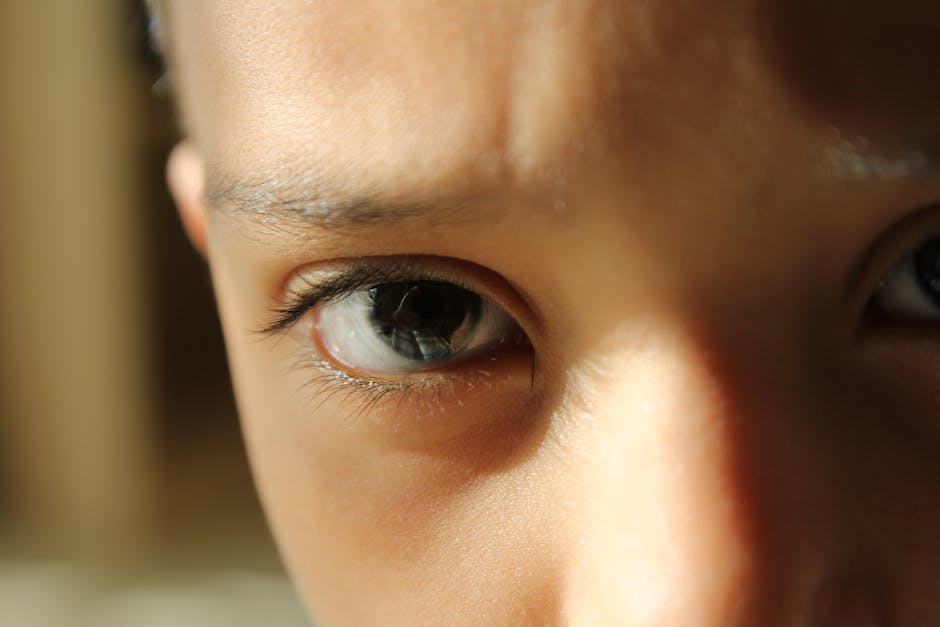Why is cycloplegic exam done?
To Understand why a Cycloplegic exam is done let us first understand what is cycloplegic refraction.

What is Cycloplegic Refraction
Cycloplegic refraction is a specialized eye examination technique that involves the use of cycloplegic agents (eye drops) to temporarily paralyze the ciliary muscles in the eye. These muscles are responsible for changing the shape of the eye’s natural lens to focus on objects at different distances.
By temporarily immobilizing these muscles, cycloplegic refraction eliminates their ability to accommodate or adjust the lens, providing an accurate measurement of the eye’s refractive error, which includes conditions like nearsightedness, farsightedness, and astigmatism.
Cycloplegic refraction is particularly important in pediatric eye care and for individuals with strong accommodative reflexes, such as children and young adults. When the ciliary muscles are active, as they are during a standard eye exam, they can artificially reduce the measured refractive error, leading to an inaccurate prescription for eyeglasses or contact lenses.
By using cycloplegic eye drops to temporarily “freeze” the ciliary muscles, eye care professionals can obtain a more precise and reliable assessment of the patient’s refractive error, ensuring that the prescribed vision correction is both accurate and appropriate. This technique is essential for diagnosing and managing vision issues in growing children and obtaining an accurate baseline for eye health assessments.
Cycloplegic Eye drops used by Doctors
Generally the doctors use either of the following Cycloplegic Eye drops
- 1% Atropine eye drop
- 2% Hypertropine Eye drop
- cyclopentolate eyedrops
- Atropine eye ointment

Importance of Cycloplegic Eye Exams
- Accurate Refractive Error Assessment: One of the primary reasons for performing a cycloplegic eye exam is to accurately measure the refractive error of the eye. Refractive error occurs when the eye cannot properly focus light on the retina, leading to blurry vision. In standard eye exams, the ciliary muscles may still be active, making it difficult to determine the true extent of refractive error, especially in children and young adults. Cycloplegia temporarily eliminates this muscle activity, providing a precise measurement of refractive error.
- Pediatric Eye Care: Cycloplegic eye exams are especially important for children and adolescents. Young eyes are constantly growing and changing, and accurate assessment of their vision is crucial for early detection and management of vision problems. Conditions like amblyopia (lazy eye), strabismus (crossed eyes), and significant refractive errors can be identified and treated more effectively with cycloplegic exams.
- Proper Prescription for Eyeglasses and Contact Lenses: Accurate refractive error measurements obtained from cycloplegic eye exams help optometrists and ophthalmologists prescribe the correct eyeglasses or contact lenses. This ensures that patients receive the most appropriate vision correction, minimizing eye strain and discomfort.
- Monitoring Eye Health: Cycloplegic exams are not limited to refractive error assessment. They also provide an opportunity to assess the overall health of the eye. Optometrists and ophthalmologists can examine the structures of the eye, including the retina, optic nerve, and macula, for signs of various eye diseases, such as glaucoma or retinal detachment.
- Research and Clinical Studies: Cycloplegic eye exams are essential in research and clinical studies related to eye health and vision. They provide standardized and accurate data, enabling scientists and clinicians to develop better diagnostic tools and treatment options.
How Cycloplegic Eye Exams Are Conducted
Cycloplegic eye exams are typically performed by eye care professionals, including optometrists and ophthalmologists, in a clinical setting. The procedure involves the following steps:
- Patient Preparation: The patient is seated comfortably in an examination room. The eye care professional explains the procedure and addresses any concerns or questions the patient may have.
- Eye Drops: Cycloplegic eye drops are administered into each eye. These drops contain cycloplegic agents that temporarily paralyze the ciliary muscles, preventing them from accommodating and focusing on near objects.
- Waiting Period: After administering the eye drops, patients are typically required to wait for approximately 20 to 30 minutes to allow the cycloplegic agents to take full effect.
- Examination: Once the waiting period has elapsed, the eye care professional conducts a comprehensive eye examination, including measurements of visual acuity, intraocular pressure, and a detailed assessment of the eye’s structures.
- Refraction: During the exam, the patient’s refractive error is carefully measured using specialized equipment. This step provides an accurate assessment of the patient’s vision needs.
- Assessment and Diagnosis: The eye care professional analyzes the examination results, diagnoses any vision or eye health issues, and discusses treatment options or the need for vision correction.
Hope you understand know Why is cycloplegic exam done.If you or your child are due for an eye examination, consult with an eye care professional to determine whether a cycloplegic eye exam is necessary. Remember that regular eye exams are essential for maintaining optimal vision and preventing eye-related issues in the long term.
Follow us in Facebook

You must be logged in to post a comment.